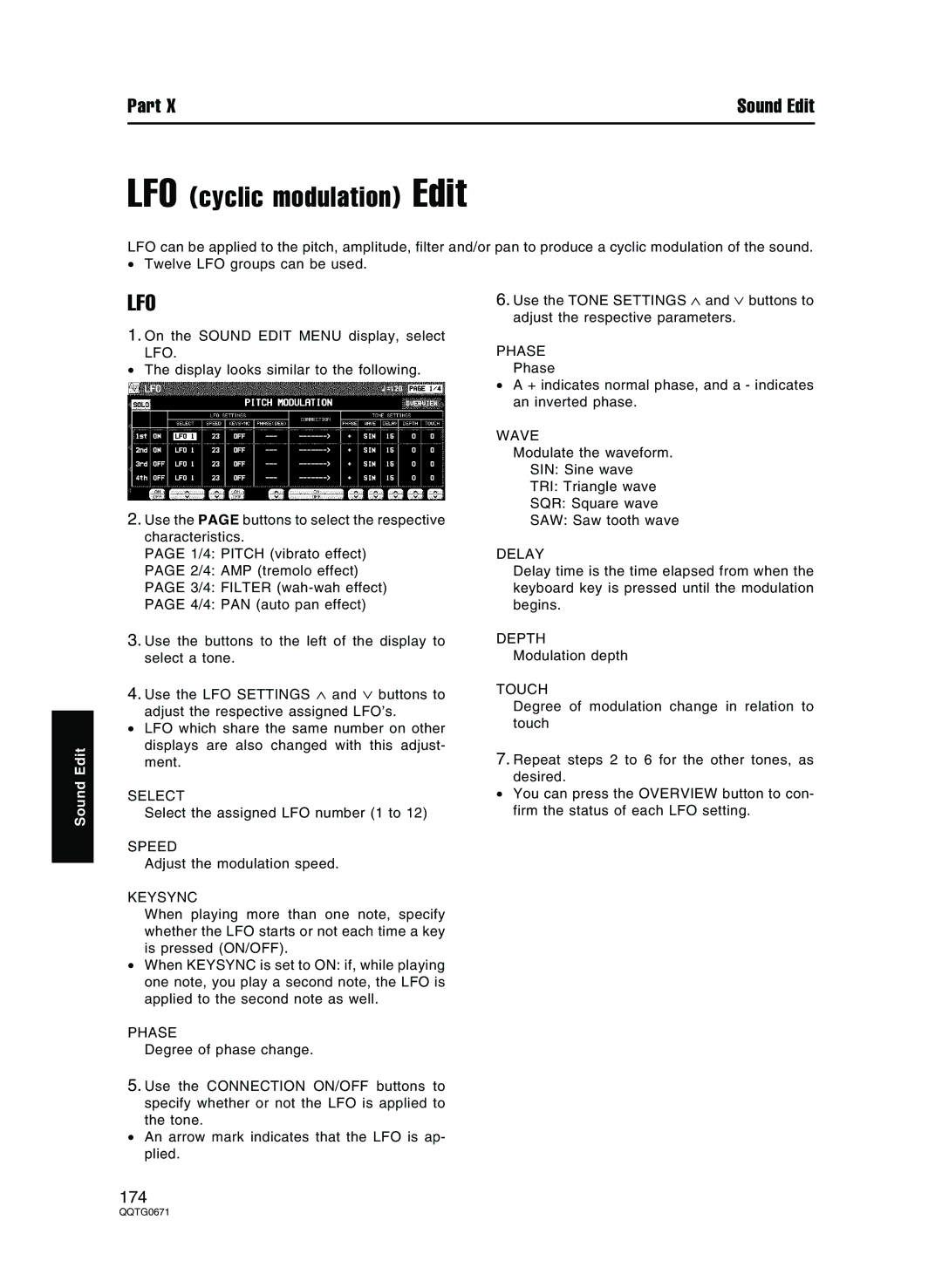
Part X | Sound Edit |
LFO (cyclic modulation) Edit
LFO can be applied to the pitch, amplitude, filter and/or pan to produce a cyclic modulation of the sound.
•Twelve LFO groups can be used.
Sound Edit
LFO
1.On the SOUND EDIT MENU display, select LFO.
•The display looks similar to the following.
2.Use the PAGE buttons to select the respective characteristics.
PAGE 1/4: PITCH (vibrato effect)
PAGE 2/4: AMP (tremolo effect)
PAGE 3/4: FILTER
PAGE 4/4: PAN (auto pan effect)
3.Use the buttons to the left of the display to select a tone.
4.Use the LFO SETTINGS ∧ and ∨ buttons to adjust the respective assigned LFO’s.
•LFO which share the same number on other displays are also changed with this adjust- ment.
SELECT
Select the assigned LFO number (1 to 12)
SPEED
Adjust the modulation speed.
KEYSYNC
When playing more than one note, specify whether the LFO starts or not each time a key is pressed (ON/OFF).
•When KEYSYNC is set to ON: if, while playing one note, you play a second note, the LFO is applied to the second note as well.
PHASE
Degree of phase change.
5.Use the CONNECTION ON/OFF buttons to specify whether or not the LFO is applied to the tone.
•An arrow mark indicates that the LFO is ap- plied.
6.Use the TONE SETTINGS ∧ and ∨ buttons to adjust the respective parameters.
PHASE
Phase
•A + indicates normal phase, and a - indicates an inverted phase.
WAVE
Modulate the waveform.
SIN: Sine wave
TRI: Triangle wave
SQR: Square wave
SAW: Saw tooth wave
DELAY
Delay time is the time elapsed from when the keyboard key is pressed until the modulation begins.
DEPTH
Modulation depth
TOUCH
Degree of modulation change in relation to touch
7.Repeat steps 2 to 6 for the other tones, as desired.
•You can press the OVERVIEW button to con- firm the status of each LFO setting.
174
